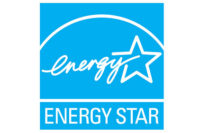Energy Star, the popular program administered by the Environmental Protection Agency (EPA) and the Department of Energy (DOE), has been labeling energy-efficient products with its logo since 1992. Now, the EPA has announced that the program is moving in a new direction, away from its current practice of self-certification.
According to EPA’s website, the goal of the new initiative is “to ensure that Energy Star remains a trusted symbol for environmental protection through superior efficiency.” To achieve this, EPA and DOE are requiring manufacturers to have their products third-party certified.
All products carrying an Energy Star label will be subjected to this testing and verification in the future, including HVAC products that carry the label, such as central air conditioning units, air-source heat pumps, boilers, furnaces, geothermal heat pumps, etc.
Eamon Monahan, a program analyst with EPA, said that these steps are being implemented to maintain the integrity of the Energy Star label: “It’s a movement to have more behind the label - backing it up with testing or some sort of certification to prove customers are getting what the label promises.”
Historically, Monahan explained, the manufacturers who partnered with Energy Star submitted test data on their products directly to EPA, which then reviewed the data and added qualifying products to its list of Energy Star products. When the program was initiated, Monahan said, “EPA didn’t want to create a bottleneck that would prevent energy-efficient products from getting to the market.”
Now the agency has a larger goal to ensure that the products on its list are not just self-certified by their makers, but also tested to recognized standards for energy efficiency by independent third parties.
The two main facets to EPA’s new testing system consist of testing that is performed before and after a product’s introduction to the market. Qualification testing will be performed prior to a product’s introduction to the market. The second arm of testing, called verification testing, will be done on a random basis to labeled products after they have been released to the market.
Both types of testing must be performed in EPA-recognized laboratories, and the test data will be reviewed and certified by third-party certification bodies. These bodies may include organizations that conduct product certification, such as Underwriters Laboratories (UL) and AHRI.
The target date for launching the new testing requirements is Dec. 30. According to Monahan, currently qualified products will not have to be requalified under the new program, although the EPA is still figuring out how these products will fit into its new testing scheme.
One option that EPA is considering will make currently qualified products subject to random verification testing. Monahan clarified, “We don’t feel the program needs a lot of cleaning up, but there are a lot of green labels out in the marketplace, and it’s hard to justify a self-certified label.”
So, he said, while the new testing requirements will be a big change in the way that EPA qualifies products, “In the end, the qualified product lists are going to look much the same.”
For more information, visit www.energystar.gov/testingandverification.
Publication date:09/27/2010
Copyright ©2025. All Rights Reserved BNP Media.
Design, CMS, Hosting & Web Development :: ePublishing






